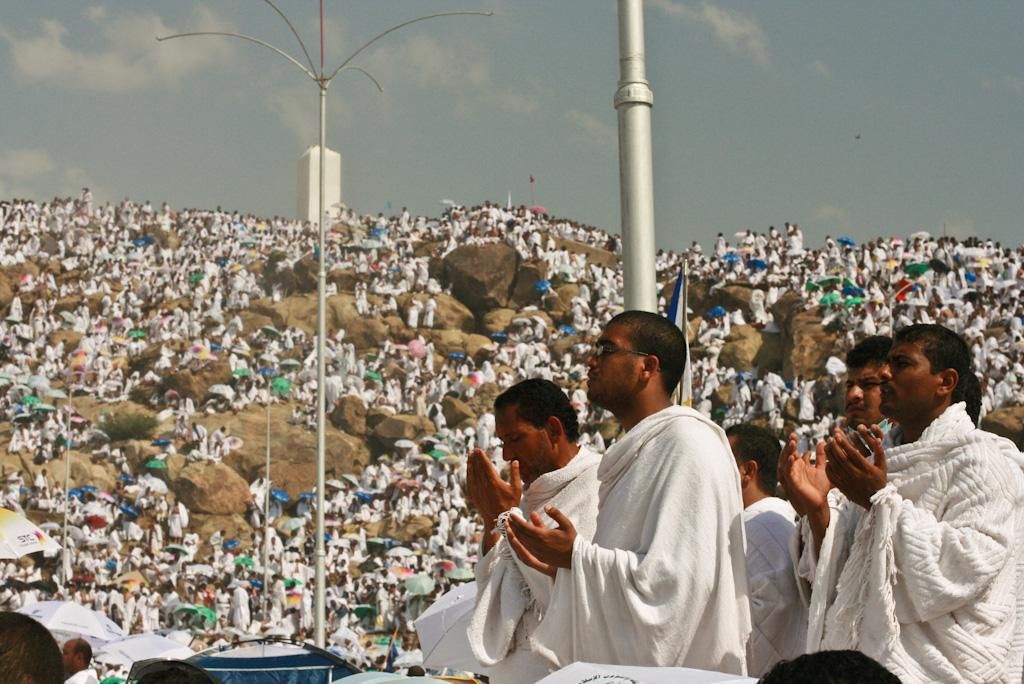Killer Heat Is Expected in the Persian Gulf by the End of This Century
If no efforts are made to reduce greenhouse gas emissions, the Middle East may experience heat that is intolerable to humans
/https://tf-cmsv2-smithsonianmag-media.s3.amazonaws.com/filer/01/d0/01d0b71e-592f-4d19-a3a1-6741fc17110e/istock_000020772209_large.jpg)
Heat waves in areas of the Arabian Peninsula and Iran could get worse by 2100—a lot worse. If nothing is done to limit greenhouse gas emissions, simulations show that some Middle Eastern cities could experience a never-before-seen combination of temperature and humidity that would be beyond the limit of human survival.
“The new study thus shows that the threats to human health [from climate change] may be more severe than previously thought, and may occur in the current century,” Christoph Schär of the Institute for Atmospheric and Climate Science in Zurich writes in a commentary accompanying the study, published today in Nature Climate Change.
Deadly heat waves are not uncommon, but they seem to be getting worse in a warming world. Earlier this year, for instance, more than 2,500 people died in India when temperatures reached as high as 118.4 °F. In such hot weather, people who cannot escape to indoor air conditioning are at risk of developing heatstroke, which can be deadly. The elderly are particularly vulnerable.
At high levels of heat and humidity, even a healthy young adult is at risk. When temperatures soar, humans cool off by sweating, because the evaporating sweat carries heat away. But when it's very humid, evaporation is impeded and it's harder for the body to cool down.
When heat and humidity are both extremely high, the human body can lose the ability to regulate its temperature, a condition known as hyperthermia. Body temperature rises, and if this condition goes on long enough, death occurs.
Scientists estimate that the threshold for this situation is when something called the wet-bulb temperature rises to 95 °F for at least six hours. Wet-bulb temperature is a combination of heat, humidity and air pressure and provides a measure of mugginess.
At sea level, the threshold would be reached with an air temperature of 116 degrees and 50-percent humidity—the heat index in this case would be a whopping 177 degrees.
Several years ago, researchers calculated that the planet wouldn’t see the wet-bulb limit until global warming drove average temperatures up by 12.6 degrees or more, which would occur sometime after this century, assuming no actions are taken to mitigate warming.
But Elfatih Eltahir of MIT and Jeremy Pal of Loyola Marymount University in Los Angeles suspected things might be different in the Middle East. In areas near the Persian Gulf, they note, the blinding summer sun drives the gulf’s water to heat up and evaporate, causing spikes in humidity.
The team modeled how temperature and humidity would change over the next century in cities on the Arabian Peninsula and in Iran under two scenarios, one in which greenhouse gas emissions continue to rise unabated and another in which emissions are curtailed.
They found that by 2100, five cities—Doha in Qatar, Abu Dhabi and Dubai in the United Arab Emirates, Dharhran in Saudi Arabia and Bandar Abbas in Iran—would have heat waves that reach the wet-bulb threshold.
“Our results suggest that the … threshold will be breached along much of the Persian Gulf on average once every 10 to 20 years or so at the end of the century,” Pal said during a telephone press conference held with Eltahir on October 20.
Areas that don’t experience high humidity would still be at risk from high heat. In Jeddah and Mecca, Saudi Arabia, for instance, heat waves could bring temperatures exceeding 131 degrees, the researchers calculated.

If such an event coincided with the Hajj, the annual Muslim pilgrimage, the consequences could be severe. Part of the Hajj requires that pilgrims pray outdoors for hours during the day, and the extreme heat their model predicts could be especially dangerous for elderly worshippers, Eltahir said.
Even a normal day in the Middle East would get extremely uncomfortable, with highs regularly reaching what is today considered a heat wave.
“In the future, that type of event [would occur] on average every other day of the summer,” Pal said. Well-off people would be able to escape indoors, but those in outdoor industries such as construction and oil and gas would be at risk, as would anyone in poorer regions such as Yemen, where air conditioning is rare.
But this doesn’t have to happen, the team notes. If greenhouse gases emissions are mitigated such that global temperatures rise no more than 4.3 degrees, their simulation shows that the wet-bulb threshold won't be reached, and extreme heat waves won't happen anywhere except where they already occur.
/https://tf-cmsv2-smithsonianmag-media.s3.amazonaws.com/accounts/headshot/Sarah-Zielinski-240.jpg)
/https://tf-cmsv2-smithsonianmag-media.s3.amazonaws.com/accounts/headshot/Sarah-Zielinski-240.jpg)